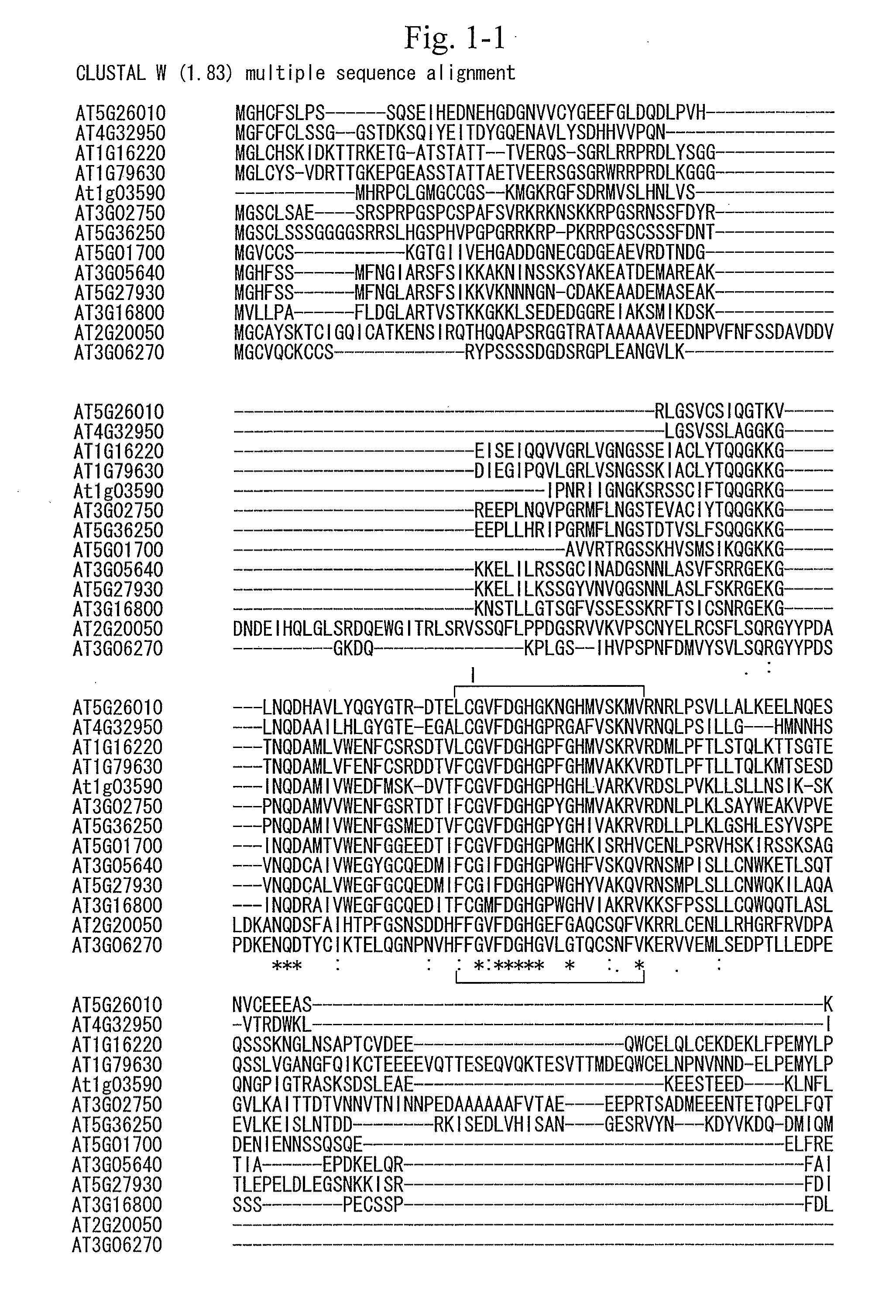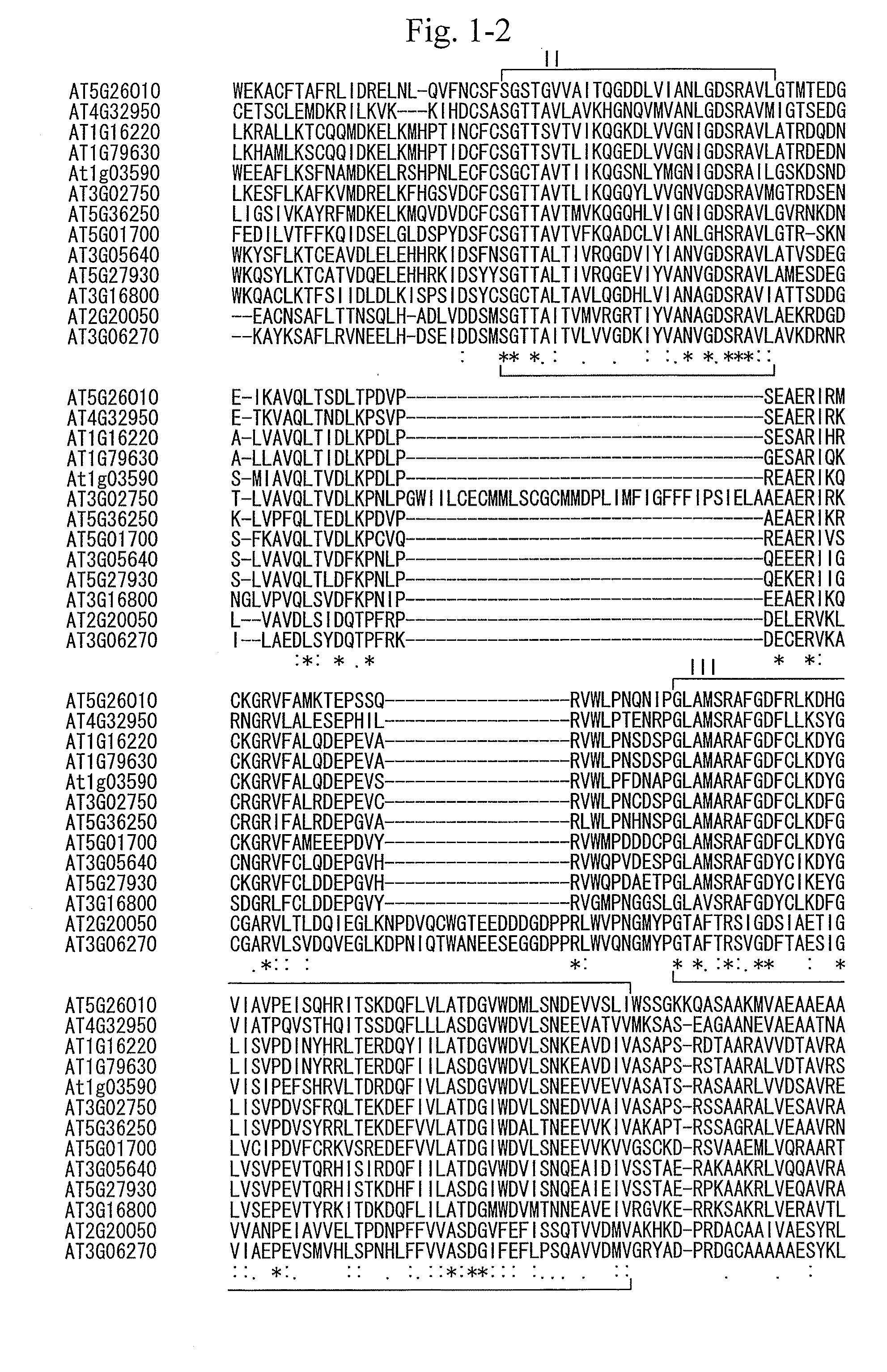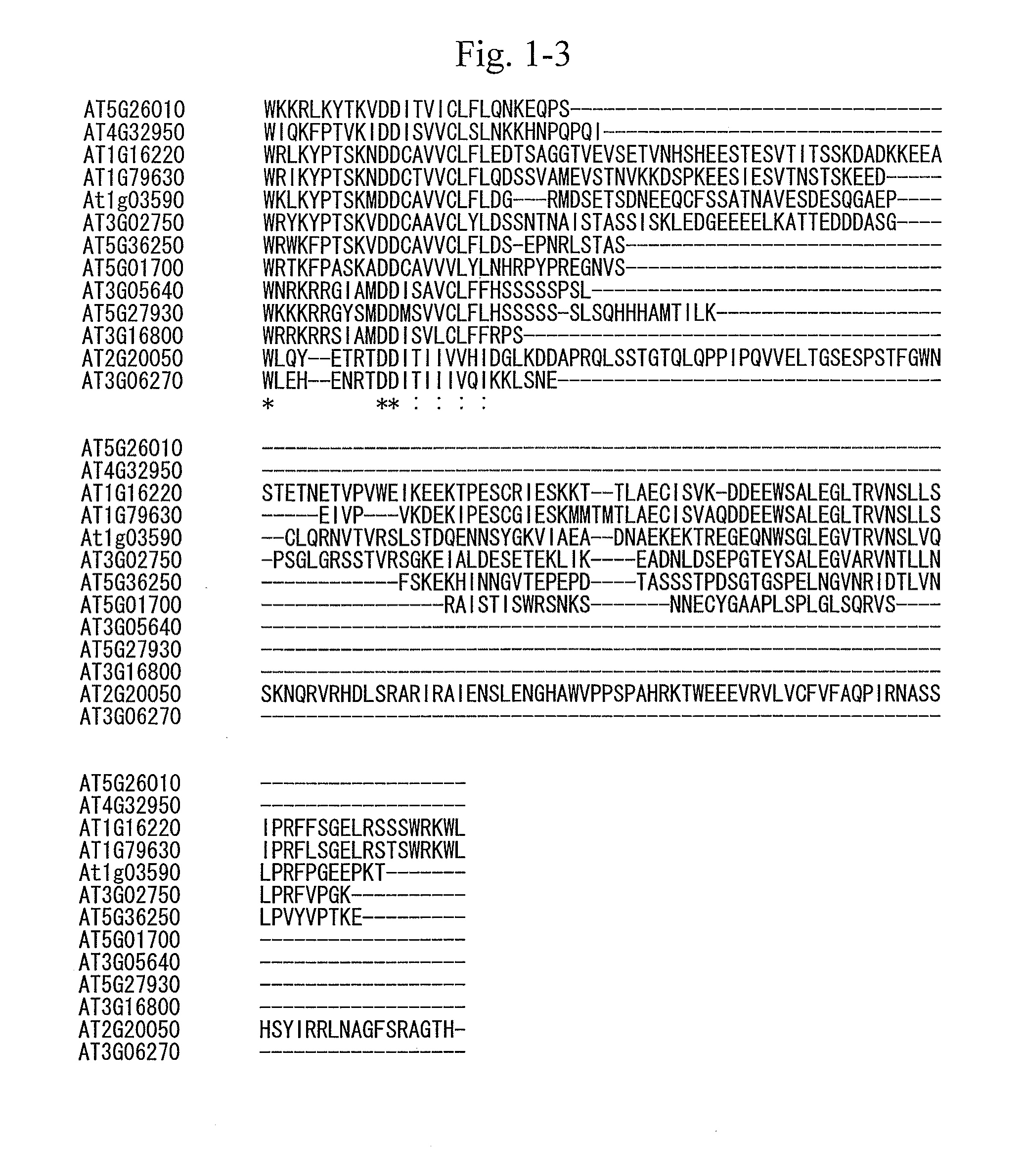Gene for increasing the production of plant biomass and/or seeds and method for use thereof
a technology of plant biomass and/or seeds, which is applied in the direction of hydrolases, biochemistry apparatuses and processes, fermentation, etc., can solve the problems of increasing production, increasing the production of plants, and affecting the quality of plants, so as to increase the production and improve the effect of biomass and/or seeds
- Summary
- Abstract
- Description
- Claims
- Application Information
AI Technical Summary
Benefits of technology
Problems solved by technology
Method used
Image
Examples
reference example 1
1. Materials and Methods
1-1. Experimental Materials
[0138]As experimental materials, seeds of Arabidopsis thaliana mutants (Activation-tag lines: Weigel T-DNA lines, 20072 lines) were used. In addition, the seeds were purchased from the Nottingham Arabidopsis Stock Centre (NASC). Regarding the seeds used as experimental materials, Weigel, D. et al., 2000, Plant Physiol. 122, 1003-1013 can be referred to.
1-2. Methods
1-2-1. Selection of Salt-Resistant Mutants
[0139]Seeds of Weigel T-DNA lines were aseptically sowed on 125 mM or 150 mM NaCl-containing modified MS agar (1%) medium [vitamins in B5 medium, 10 g / l sucrose, and 8 g / L agar (for bacterial medium; Wako Pure Chemical Industries, Ltd.)] and then cultured at 22° C. under 30-100 μmol / m2 / sec illumination (a cycle of 16 hours in the light / 8 hours in the dark). Two to 4 weeks after sowing, salt-resistant mutant candidates were selected. In addition, regarding MS medium, see Murashige, T. et al., 1962, Physiol. Plant. 15, 473-497. Also,...
example 1
[0164]In Example 1, transformed plants were produced by introducing a glutathione-binding plastid-type fructose 1,6-bisphosphate aldolase gene (hereinafter, FBA1 gene) into transformed plants into which the PP2C (protein phosphatase 2C) gene (At3g05640) had been introduced.
2. Materials and Methods
2-1. Experimental Materials
[0165]As experimental materials, the seeds of T3 (or later) plants of transformed plants into which a fragment containing ORF of the PP2C (protein phosphatase 2C) gene (At3g05640) prepared in 1-2-7 had been introduced, were used. Wild-type Arabidopsis thaliana (ecotype Col-0) was used.
[0166]The plants were transplanted into square plastic pots (6.5×6.5×5 cm) containing, from the bottom, vermiculite (Asahi Kogyo), Kureha culture soil (Kureha gardening culture soil, Kureha Corporation), and vermiculite at a ratio of 2:2:1 to form 3 layers. They were grown under long-day conditions of 22° C. (growth temperature) and 16 hours in the light / 8 hours in the dark.
2-2. Meth...
PUM
| Property | Measurement | Unit |
|---|---|---|
| pH | aaaaa | aaaaa |
| diameter | aaaaa | aaaaa |
| humidity | aaaaa | aaaaa |
Abstract
Description
Claims
Application Information
 Login to View More
Login to View More - R&D
- Intellectual Property
- Life Sciences
- Materials
- Tech Scout
- Unparalleled Data Quality
- Higher Quality Content
- 60% Fewer Hallucinations
Browse by: Latest US Patents, China's latest patents, Technical Efficacy Thesaurus, Application Domain, Technology Topic, Popular Technical Reports.
© 2025 PatSnap. All rights reserved.Legal|Privacy policy|Modern Slavery Act Transparency Statement|Sitemap|About US| Contact US: help@patsnap.com



